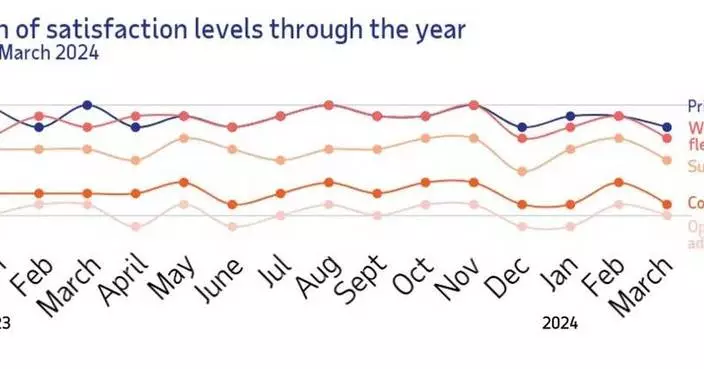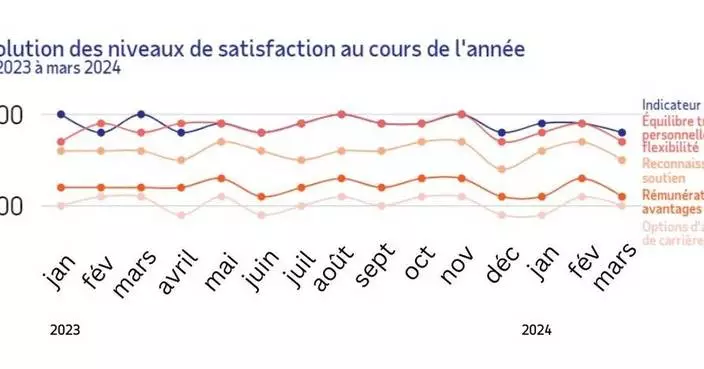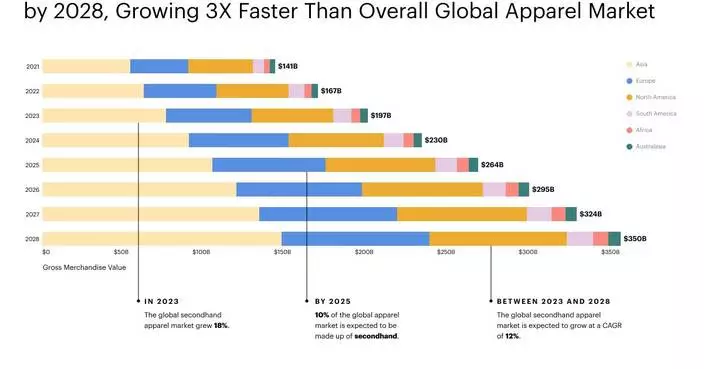Beneath the crystal-clear waters of the Indian Ocean island nation of the Seychelles, a fight is growing to save the coral reefs that shelter a range of creatures, from tiny invertebrates to the sprawling octopus, from climate change.

FILE - In this Tuesday, Feb. 20, 2018 file photo, a small island is seen above and below the water in the Seychelles. (The Ocean Agency via AP, File)
The fragile reefs act both as a protective barrier for coastlines and an attraction for the tourists who keep the country's economy going. But the reefs are also one of the first victims of rising ocean temperatures.
The Seychelles in some areas lost up to 90 percent of its coral reefs in 1998 in an environmental event known as bleaching, where coral in warming waters expel the colorful algae that live within their skeletons and, without their nutrients, starve. Another bleaching event occurred in 2016 after the reefs had partly recovered, said David Rowat, chairman of the Marine Conservation Society Seychelles.
With further threats including overfishing and pollution, coral reefs around the world will reach their tipping point before the end of the century, disappearing more quickly than they can restore themselves, according to a study published in the journal Science last month.
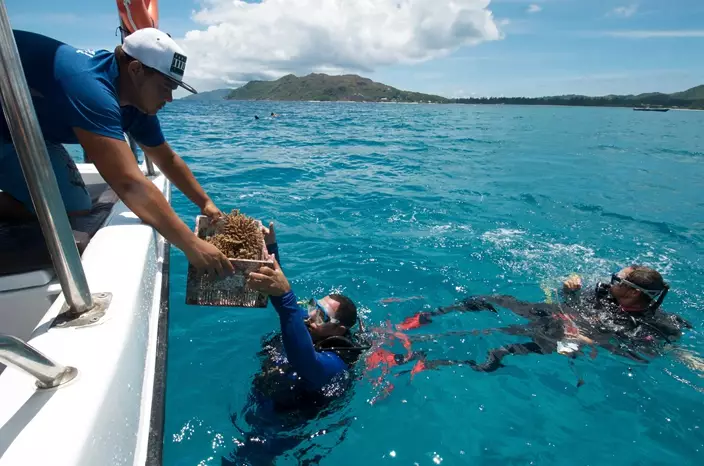
FILE - In this Tuesday, Feb. 20, 2018 file photo, a box of nursery-grown coral is handed to a diver off the coast of Praslin, where coral is being reintroduced, in the Seychelles. (Tate Drucker/The Nature Conservancy via AP, File)
The Seychelles government this year announced a pioneering deal where it swapped part of its sovereign debt for investment in marine protection areas.
Already, conservationists have launched a number of coral reef restoration projects around the nation's 115 islands. In one, more than 50,000 coral fragments have been nurtured and transplanted by a local charity, Nature Seychelles, in what the organization calls the world's largest coral restoration program.
The Marine Conservation Society has both land- and ocean-based coral nursery sites.
On a recent afternoon, an employee at one site in Beau Vallon painstakingly cleaned a nursery tank with a toothbrush. She and project leader Chloe Pozas spent the morning transferring tiny coral fragments, once collected from the sea floor, from the tanks to an underwater "rope nursery," or improvised skeleton.
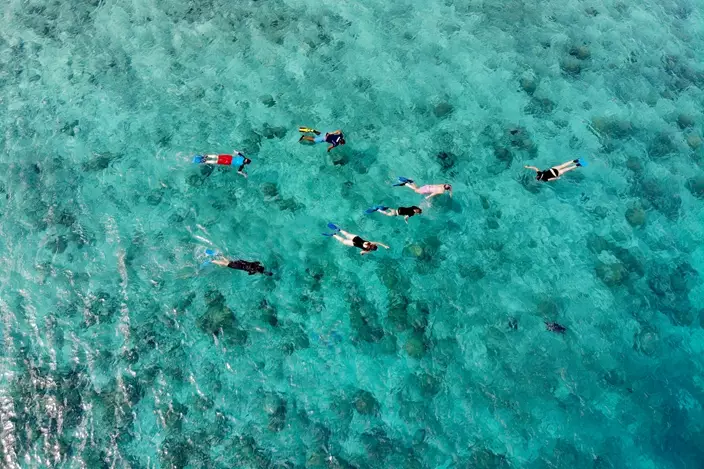
FILE - In this Tuesday, Feb. 20, 2018 file photo, snorkelers are seen over a coral reef in the Seychelles. (The Ocean Agency via AP, File)
"When the corals are going to reach a suitable size, when they are big enough, they are going to be outplanted back on the reef," Pozas said.
About 2,800 kilometers (1,700 miles) away off the island of Curieuse, the Seychelles National Park Authority has been moving corals grown in another rope nursery.
Divers delicately transfer the tiny corals to a degraded reef in a national marine park, then attach them using non-toxic epoxy resin.
After the 2016 bleaching event, experts noticed that some corals were more resilient than others. Those "super corals" were chosen for regrowth and transplanting.
"Restoration is really only a tool to try to help the reef to recover faster, especially because coral bleaching is projected to happen annually by 2050," Pozas said.
The Seychelles government is working with Nature Seychelles to secure funding for a proposal to upscale coral farming efforts to a larger operation using new methods. The aim is to commercialize part of the operation so that it can financially sustain reef restoration well into the future, according to Nature Seychelles.
Those whose livelihoods rely on tourism are watching the efforts with interest.
"Obviously we have divers and snorklers and if we can continue to have healthy reefs and lots of fish, we got happy divers, they do lots of dives, the dive center makes more business, the government gets more tax money and everybody is happy," said Glynis Rowat, who has managed one of the oldest diving centers in Beau Vallon for over 30 years.
LOS ANGELES--(BUSINESS WIRE)--Mar 27, 2024--
As the demand for efficient, reliable electric vehicle charging and hydrogen refueling infrastructure grows along the nation’s freight corridors, Greenlane today announced its first commercial EV charging corridor with more than 100 chargers, modern amenities designed to increase the comfort of drivers, resilience for high uptime and ultimately moving freight more efficiently. Greenlane is a joint venture between Daimler Truck North America LLC, NextEra Energy Resources, LLC, and BlackRock (through a fund managed by its Climate Infrastructure business). The new charging corridor along Interstate 15 aims to accelerate the rollout of carbon-neutral freight transportation with initial charging locations in Colton, Barstow and Baker, California. Over the next year, further locations will be added along the corridor, extending beyond Southern Nevada and to San Pedro in California.
This press release features multimedia. View the full release here: https://www.businesswire.com/news/home/20240327434127/en/
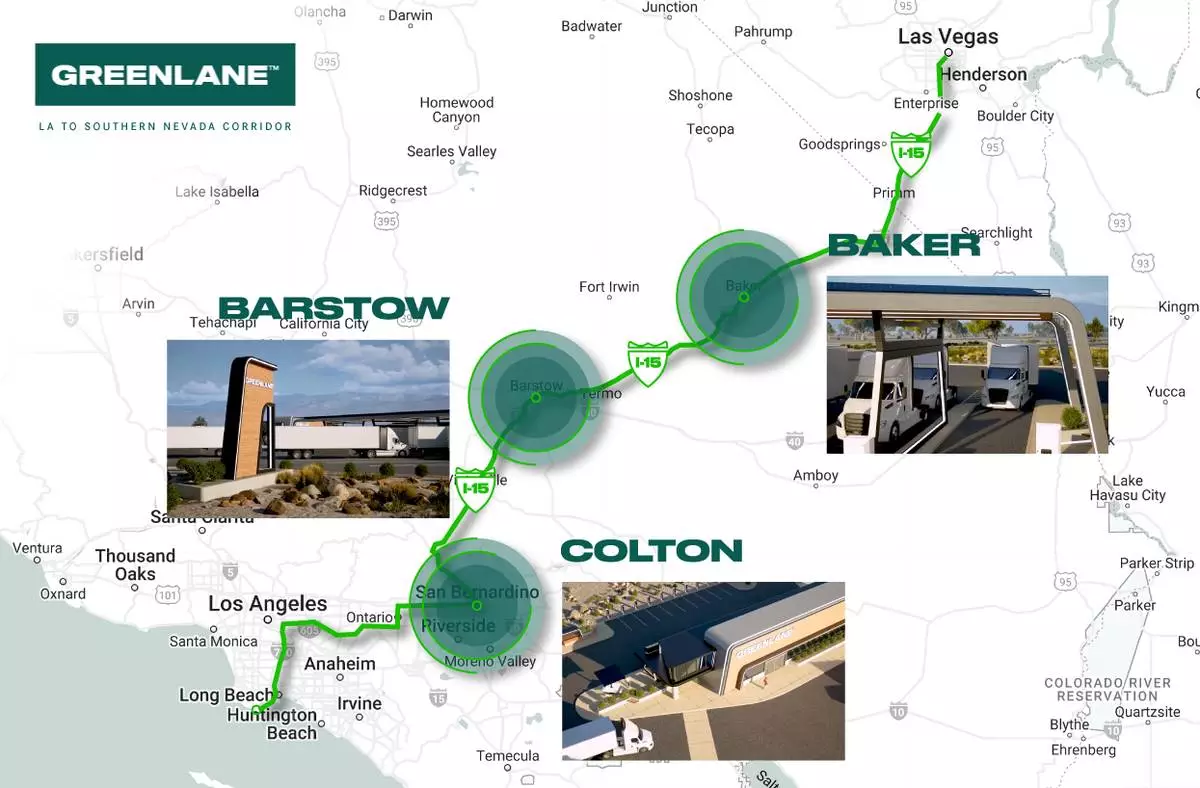
Greenlane’s initial corridor sites will be located on Interstate 15 in Colton, Barstow and Baker, California, with additional sites to connect the corridor to Southern Nevada and San Pedro, California. (Graphic: Business Wire)
“After considering various factors, such as truck telematics data, frequent freight routes and customer deployment strategy, the Greenlane team selected these three optimal locations for our first commercial charging corridor to accelerate the transition to zero emissions,” said Patrick Macdonald-King, CEO of Greenlane. “The launch of this corridor not only marks a critical step in addressing the urgent need for publicly available, nationwide electric charging for commercial vehicles but will also serve as a model for the EV charging hubs of the future.”
At full build the Colton site is planned to have over 60 chargers, including 400 kW Direct Current Fast Chargers (DCFC) to speed charging of medium- and heavy-duty zero-emission vehicles (ZEVs). More 200 kW DCFC charging options onsite will enable long-duration and overnight charging for heavy-duty tractors, medium-duty ZEVs and school buses. Greenlane will also deploy multiple passenger car charging stalls to support light-duty and passenger vehicles.
Later project phases will support both long-duration and overnight charging lanes for tractor-trailer combinations. The Greenlane site in Colton will also be future-proofed to accommodate the Megawatt Charging System (MCS) when commercially available.
"By using a predictive modeling tool to simulate truck traffic and energy flow at the site, we can determine how many chargers are necessary to meet the regional demand based on vehicle characteristics and departure and arrival times for vehicles hauling freight along this corridor," said Macdonald-King. "Our findings indicated that placing the three stations approximately 60 to 90 miles apart would maximize uptime for day-cab drivers by enabling shorter charging sessions at each stop and ultimately allowing customers to move freight confidently without any limitations."
Designed to upgrade and enhance the current rest stop experience, each Greenlane site will have wide pull-through lanes, allowing drivers to enter and exit the property quickly and easily. While waiting for vehicles to charge, drivers can access modern facilities, with restrooms and other amenities, including food and beverage options.
Greenlane aims to develop a nationwide network of commercial charging infrastructure locations across the U.S. The charging sites will also serve battery-electric passenger car and light-duty fleet customers and are designed to provide hydrogen refueling for commercial vehicles in the coming years.
Greenlane is targeting a spring groundbreaking on the Colton flagship site, aiming to open in late 2024. Located at the intersection of Interstates 10 and 215, the Colton hub will offer multiple ways for heavy-, medium- and light-duty ZEV drivers to charge their vehicles.
For more, visit www.drivegreenlane.com.
About Greenlane
Greenlane Infrastructure is a joint venture between Daimler Truck North America, LLC (DTNA), NextEra Energy Resources, LLC and BlackRock, through a fund managed by its Climate Infrastructure business. Greenlane's mission is to design, develop, install and operate a nationwide, high-performance zero-emission public charging and hydrogen refueling network for medium- and heavy-duty battery-electric and hydrogen fuel cell commercial vehicles. Greenlane addresses the urgent need for publicly available, nationwide electric charging infrastructure for commercial vehicles, especially for long-haul freight operations, and is a critical step toward the development of a sustainable zero-emission vehicle ecosystem across North America. For more, visit www.drivegreenlane.com.







